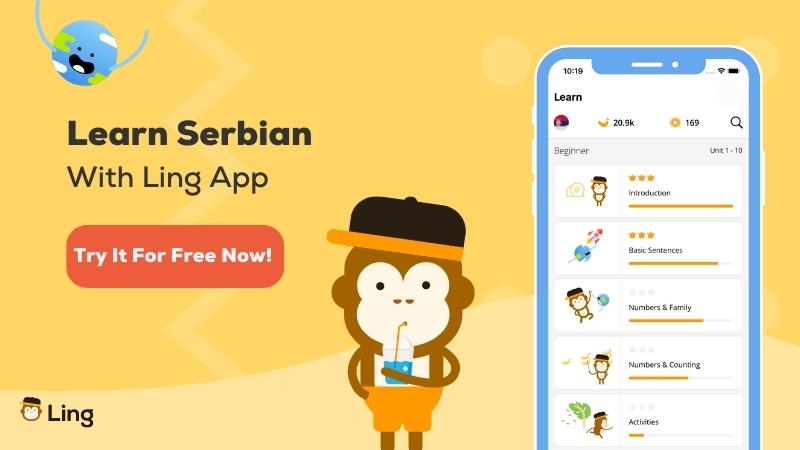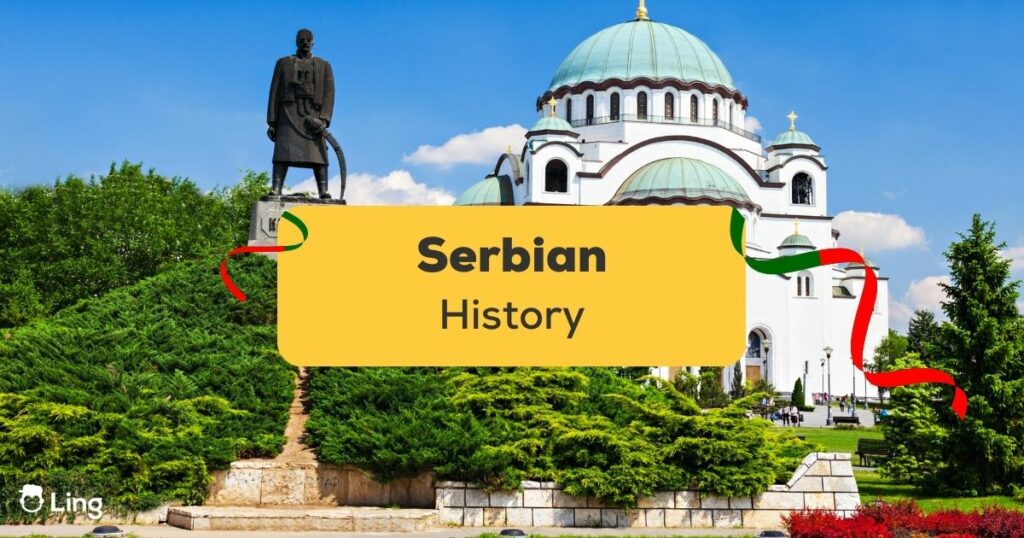Are you curious to know more about the history of the Serbian language?
Serbian, one of the official languages of Serbia and Bosnia and Herzegovina, is a member of the South Slavic branch of the Slavic languages. Its history dates back to the 9th century when the Slavs settled in the Balkans and developed their distinct dialects.
Over the centuries, the Serbian language has undergone various changes and influences, from the Cyrillic script and the Ottoman Turkish language to the Austro-Hungarian rule and the linguistic reforms of the 19th and 20th centuries.
Despite these challenges, the Serbian language has remained a vibrant and resilient part of the cultural heritage of the Serbian people and the broader Slavic world, and it has become one of the most influential Western European languages.
Where Is Serbian Spoken the Most?
A total of 8.70 million people speak the language worldwide. Serbs primarily speak Serbian, also known as Montenegrin in some cases. In addition, it is a recognized minority language in some countries.
Serbian is a spoken language in Serbia and also the official language of Serbia and Kosovo.
More than 88% of the people in Serbia speak Serbian as their native language, which has several dialects, including Šumadija-Vojvodina, Smederevo-Vršac, Kosovo-Resava, Prizren South Morava, Svrljig-Zaplanje, and Timok.
What Is The History Of The Serbian Language?
Serbian belongs to the Slavic language group. Eight million people Speak Serbian worldwide in several countries. It is the official language of Serbia and one of the official languages of Bosnia and Herzegovina, Montenegro, and Kosovo.
1. Old Church Slavonic Period
The history of the Serbian language can be traced back to the Old Church Slavonic period, which began in the 9th century. This was when the Slavs, who had previously spoken different languages, began to use a common language for religious purposes.
2. Middle Ages
In the Middle Ages, the Serbian language began to develop into a distinct language with its grammar and vocabulary. This was a time of outstanding cultural and literary achievement, with the creation of the Serbian Cyrillic alphabet and the works of notable writers such as Stefan Nemanja and St. Sava.
3. Modern Era
In the modern era, the Serbian language has continued to evolve, with influences from other languages such as Russian and French. Today, it is a vibrant and dynamic language with a rich literary tradition and a growing presence on the global stage.
What Type Of Alphabet Is Used In The Serbian Language?

The Serbian language is written using both the Cyrillic and Latin alphabets. Both scripts are officially recognized and used regularly in Serbia.
Serbian children learn the Latin alphabet and Cyrillic in the first two grades at all primary schools in Serbia. The Old Slavic Cyrillic Alphabet, based mainly on the Greek alphabet, was adapted to the Serbian phonetic system to create the modern Cyrillic alphabet by Vuk Stefanović Karadžić in the 19th century.
Today’s Latin script used in Serbia was developed from the first Croatian Latin script.
What Is Meant By The Old Serbian Language?
The Old Serbian language, also known as Old Church Slavonic, was a literary language used in medieval Slavic-speaking territories. It was based on the dialect of the Slavic people from the region of Thessaloniki.
It was created by the brothers Cyril and Methodius in the 9th century. Old Serbian was used as a liturgical language in the Orthodox Church, and it significantly impacted the development of the Slavic literary languages, including Serbian, Croatian, Bulgarian, and Russian.
Today, Old Serbian is still used in some Orthodox churches. Still, it is considered a dead language and is no longer spoken as a living language.
What Is The History Of The Serbian Flag?
The Serbian flag has a long history, dating back to the 13th century. The oldest known attestation of the colors of a Serbian flag dates back to 1281. Then, it was documented as a flag of red and blue color.
The first modern flag was conceived for the principality and Kingdom of Serbia in 1835, which was a simple red, blue, and white horizontal tricolor. In 1882, Serbia decided to create a state flag consisting of the red-blue-white tricolor with the Serbian royal coat of arms.
The arms showed a red shield bearing a white two-headed eagle, which became a symbol of Serbia. The current Serbian flag consists of three equal horizontal bands of red, blue, and white, with the lesser coat of arms centered vertically and shifted to the hoist side.
The red represents the bloodshed for the country, the blue stands for freedom, and the white represents “mother’s milk feeding strong Serbian children.”
Is the Serbo Croatian Language Similar To Serbian?
Serbo-Croatian was a language spoken in the former Yugoslavia, which included Serbia, Croatia, Bosnia and Herzegovina, Montenegro, Slovenia, and Macedonia. It was used as a common language for communication between people from different regions of the country.
However, after the breakup of Yugoslavia and the subsequent independence of these countries, the language evolved into distinct forms, including Serbian, Croatian, and Bosnian.
Serbian and Croatian are very similar languages, and they share a lot of vocabulary and grammar. They both use the Cyrillic and Latin alphabets and have many dialects.
However, there are some differences in vocabulary and pronunciation, and the two languages use different political and cultural terminology due to their unique histories.
Overall, Serbian and Croatian are mutually intelligible to a large extent, and speakers of one language can easily understand the other.
Would you like to speak like native Serbian speakers?

Learn More Serbian With Ling App!
Learning Serbian can be made easy with proper guidance and assistance. The Ling app is an excellent tool for mastering over 60 languages globally. In addition, it offers fun and engaging language learning methods such as games and puzzles.
Additionally, you can explore our other resources, such as Easy Tips To Learn Serbian and Exciting Things To Do While Traveling In Serbia, to gain more knowledge about the Serbian language and culture.
Hurry! Download the Ling app from App Store or Play Store!



































































